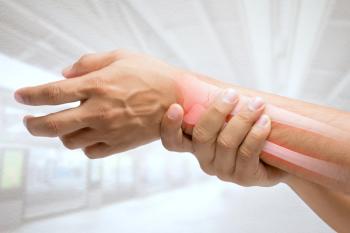
Does vitamin K affect BMD and fracture risk?
A meta-analysis explores whether vitamin K should be recommended to postmenopausal or osteoporotic patients.
There is no evidence that oral vitamin K supplementation impacts bone mineral density (BMD) or vertebral fracture in postmenopausal or osteoporotic patients, according to an updated systematic
The analysis in the journal
The authors noted that a previous systematic review in 2006 demonstrated a larger effect of vitamin K on fractures and BMD. Since then, however, the integrity of some of the previous evidence has been questioned and other studies have been published, prompting their update.
The six electronic databases searched through January 22, 2018, for eligible trials were
The 36 included studies comprised a total of 11,112 women, with follow-up between 6 months and 48 months. Overall, 24 of the trials included postmenopausal women with or without osteoporosis, three included patients with cirrhosis, two included patients with chronic glomerular nephritis, two were in healthy populations and five were in patient populations.
In addition, 13 of the studies were placebo-controlled and 16 were performed in Japan. The authors classified 19 of the trials as having high risk of bias and the remaining 17 studies as being low risk of bias.
For postmenopausal or osteoporotic patients, the analysis concluded that likelihood of any clinical fracture was lower for vitamin K compared to controls (OR 0.72; 95% CI: 0.55 to 0.95).
However, when restricting the analysis to low risk of bias studies, the chance was slightly reduced (OR 0.76; 95% CI: 0.58 to 1.01). There was no difference in vertebral fractures between the two groups (OR 0.96; 95% CI: 0.83 to 1.11): 10.55% in the vitamin K group versus 10.82% in the control group.
For the BMD analysis, the percentage change from baseline at the lumbar spine was higher for vitamin K compared to controls at 1 year (BMD 0.93; 95% CI: 0.02 to 1.89) and at 2 years (BMD 1.63%; 95% CI: 0.10 to 3.16).
But by removing studies at high risk of bias, the results tended to be of smaller differences that were not statistically significant. For instance, at 6 months, BMD was higher in the hip (BMD 0.42%, 95% CI: 0.01 to 0.83) and femur (BMD 0.29%; 95% CI: 0.17 to 0.42) versus controls.
There was no meaningful difference in BMD at other anatomical sites.
The studies that were powered to detect a reduction in fracture risk defined the minimum clinically relevant reduction as being between 20% and 35%.
The authors found a fracture reduction of 28% in all studies and 24% in studies with a low risk of bias. Despite these findings, the translation to clinical practice is hindered by the high variability in study designs and treatment regimens, including the form of vitamin K dosage; cosupplementation with drugs, vitamin D and minerals; and length of treatment.
“Further research might focus on the use of vitamin K supplementation in individuals with a high baseline fracture risk or with clear biochemically defined vitamin K insufficiency, and outcomes that can explore alternative mechanisms of action,” the authors wrote.
Newsletter
Get the latest clinical updates, case studies, and expert commentary in obstetric and gynecologic care. Sign up now to stay informed.










